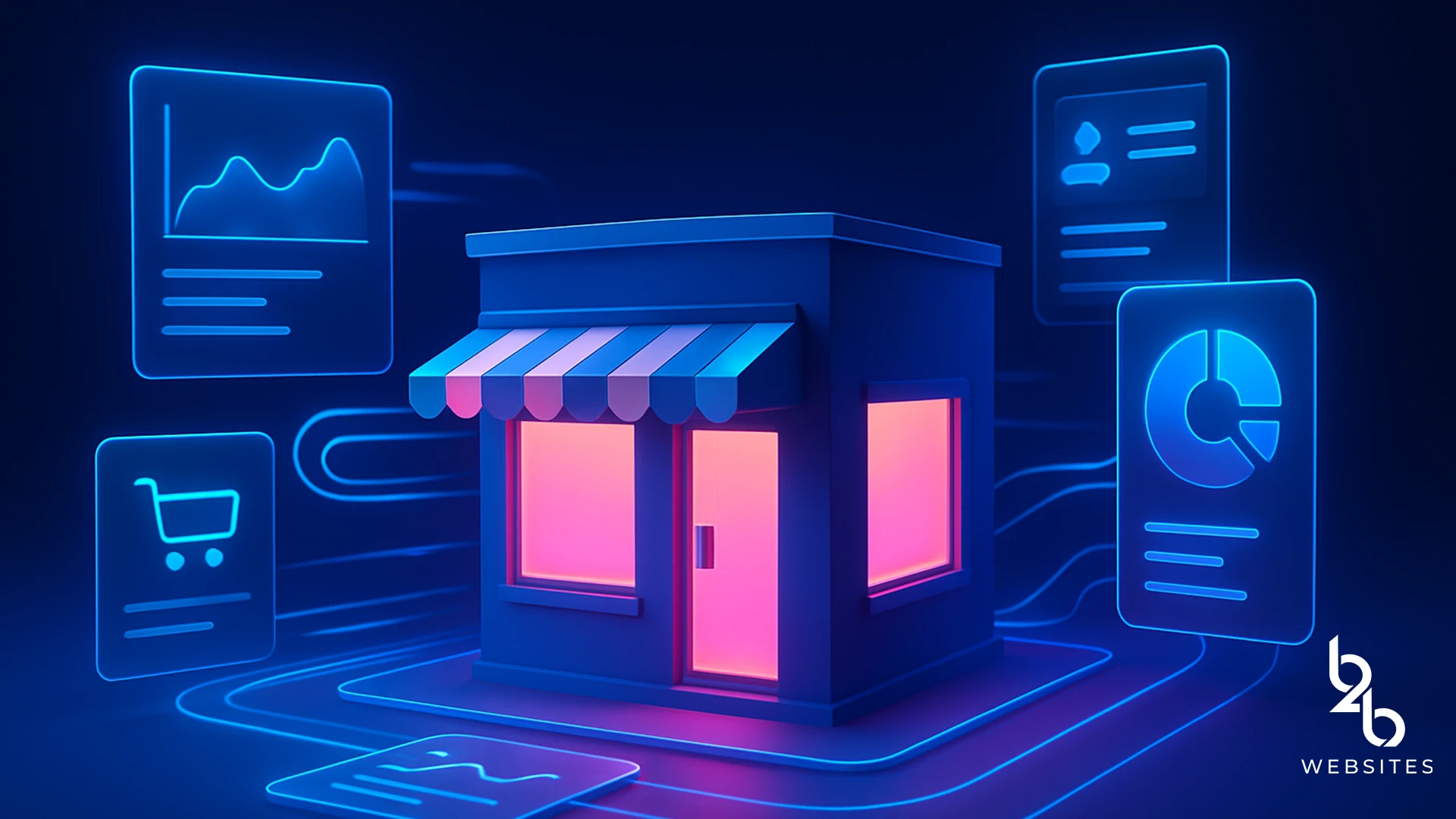

For many small and medium-sized business owners in Australia, website maintenance is the digital equivalent of bookkeeping. It is necessary, but it often feels like a distraction from running your business.
If you are using older platforms or heavily customised themes, you know the pain. Regular plugin updates, broken layouts, slow loading times, and constant security patches eat away at your time and budget. Worse still, if you skip maintenance, your site can become outdated, vulnerable to hacks, or start losing its search rankings.
There is a smarter way. Webflow is designed to give you more control over your website without the constant maintenance headaches. By reducing many of the manual tasks required on other platforms, it can cut your maintenance time by half or more, freeing you up to focus on growth rather than troubleshooting.
How can Webflow help you spend less time maintaining your website?
Website maintenance is more than just a financial cost. It has an opportunity cost. Every hour spent fixing a layout issue or chasing down a plugin conflict is an hour you could have spent talking to customers, building partnerships, or developing new products.
Common maintenance headaches include:
For SMEs, these tasks can consume several hours each month, adding up to days of lost productivity over the course of a year.

Webflow approaches website management differently. Instead of relying on layers of third-party add-ons, it combines design, content management, hosting, and security in one platform. This all-in-one structure means fewer moving parts to update and maintain.
On platforms like WordPress, plugins are essential for SEO, forms, image optimisation, and more. Each plugin comes with its own update schedule, compatibility risks, and potential security flaws.
Webflow has many of these capabilities built in, which removes the need for plugin management. You do not have to worry about whether your SEO tool will break after a core update.
Webflow’s hosting is powered by Amazon Web Services and Fastly, which means fast loading speeds and global reliability. Security features such as SSL certificates are automatically applied. No manual renewals. No configuration headaches. Fewer chances of downtime.
With Webflow’s Editor, business owners can log in, make simple content changes, and publish updates instantly. This helps keep the site fresh without waiting for every small change to go through a developer.
However, for more complex updates, integrations, and performance optimisations, partnering with a Webflow developer ensures you are getting the most out of the platform. If you are not sure whether your site requires deeper technical work, this guide will help: How to Know if My Australian Webflow Site Needs Custom Code.
Webflow generates clean HTML, CSS, and JavaScript. The result is faster load times and fewer technical issues long term. That means less time diagnosing performance bottlenecks or compatibility errors.
A Brisbane-based fitness studio was spending up to four hours per month on maintenance for their WordPress site. Between plugin updates, security scans, and fixing broken forms, it was a constant drain on resources.
After migrating to Webflow, their monthly maintenance tasks dropped to under one hour. Hosting and security were managed automatically, and staff could update class schedules themselves with minimal technical help. With the support of a Webflow developer, the site was optimised for speed and search performance.
The result? More time for marketing and client engagement, and fewer unpleasant surprises from unexpected site issues.
At Webflow Conf 2025, the platform announced new features that make website upkeep even easier. These updates strengthen the case for Webflow as the go-to choice for SMEs that want less maintenance and more growth.
Webflow’s new AI Assistant acts as a conversational partner. You can use prompts to edit designs, generate content, or even build functional components like dashboards or calculators. It also handles repetitive tasks such as metadata, alt text, and schema generation. This saves time and reduces human error.
While these tools are powerful, a developer can help integrate them seamlessly into your site strategy and ensure they align with your business goals.
The CMS has been re-architected for scalability with more flexible structures, deeper nesting, and better performance. Hosting upgrades built on AWS, Fastly, and Cloudflare improve reliability and reduce the risk of downtime or slow load speeds.
Multiple users can now edit the same page at once, much like Google Docs. You can also share comment-only review links with stakeholders who do not need a Webflow account. The new Component Canvas makes it easier to manage design consistency, preview changes, and keep everything organised.
Webflow forms now have per-form settings, spam filtering, and improved notification handling. Meanwhile, the new Webflow Analyze and Optimize tools provide built-in analytics, A/B testing, clickmaps, and AI traffic insights. This removes the need for multiple third-party analytics tools.

Reducing maintenance time does not mean cutting corners. Webflow’s integrated approach often improves site quality because:
Strong SEO foundations are another advantage. Because Webflow generates clean, structured code and optimises performance from the start, sites are better positioned for visibility in search. This is becoming even more important as Google introduces AI Overviews. If you are comparing how different platforms perform in this area, our guide on Is Webflow Better Suited for AI Overviews than WordPress or Shopify? breaks down why Webflow has the edge.
When supported by a skilled Webflow developer, businesses get the best of both worlds. They enjoy an easy-to-manage platform while ensuring it is optimised, scalable, and fully aligned with growth goals.
Switching to Webflow is straightforward with the right plan.
While Webflow offers huge time savings, it is not ideal for every business. Companies with highly complex backend integrations may need custom development.
However, for most Australian SMEs, especially those relying on marketing sites, portfolios, or e-commerce stores, Webflow offers speed, flexibility, and ease of management. The best results come when business owners use Webflow for quick content changes and partner with a developer for advanced features and optimisation.
If you are still using generic website templates, this article explains why making the switch to Webflow can give your business a significant edge: Why Australian SMEs Should Ditch Generic Templates for Webflow.
Website maintenance does not have to be a constant drain on your time and resources. By consolidating design, hosting, security, and content management into one streamlined platform, Webflow removes many of the repetitive tasks that eat up hours each month.
With the new AI tools, improved CMS, real-time collaboration, and smarter analytics announced at Webflow Conf 2025, maintaining a site is now faster and easier than ever.
For busy business owners in Australia, the smartest move is to use Webflow for everyday content updates while working with a Webflow developer to ensure your site stays fast, secure, and fully optimised for growth.
If you would like to learn more about digital growth strategies, explore our latest blogs. And if you need expert help in building or migrating your website, our team at B2B Websites is here to help you get it right.
1. Is Webflow easier to manage than WordPress?
Yes. Webflow reduces reliance on plugins and constant updates, making it much easier to maintain.
2. Do I still need a Webflow developer?
Yes. While you can manage basic content updates yourself, a Webflow developer ensures your site is optimised, scalable, and set up to perform at its best. If you are unsure whether your site requires custom technical work, see our guide: How to Know if My Australian Webflow Site Needs Custom Code.
3. What’s the role of AI in Webflow now?
Webflow AI helps generate content, optimise SEO settings, and even build functional web apps. A developer can guide you in using these tools strategically.
4. Is Webflow hosting reliable in Australia?
Yes. With AWS, Fastly, and Cloudflare powering its infrastructure, uptime and performance are world-class.
5. Can Webflow handle e-commerce sites?
Yes. Webflow offers built-in e-commerce features. A developer can help configure and optimise them for your business needs.
6. How long does it take to migrate a site to Webflow?
It depends on complexity, but many SMEs can complete the process in a few weeks with the help of an experienced developer.